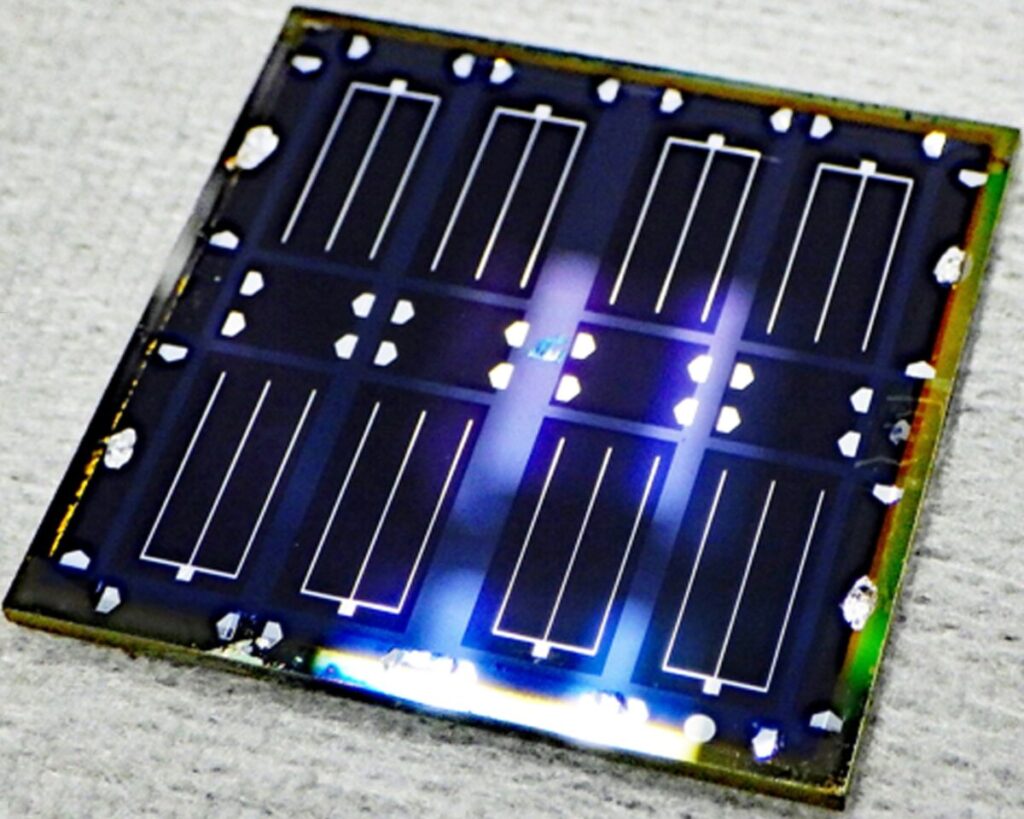Japanese scientists have developed a wide bandgap chalcopyrite solar cell that can reportedly achieve high open-circuit voltage and fill factor values. The device is intended for use in top cell applications in tandem devices.
Scientists at the National Institute of Advanced Industrial Science and Technology (AIST) in Japan have fabricated a wide bandgap thin-film solar cell based on an indium-free chalcopyrite (CuGaSe2 or CGSe) absorber.
CuGaSe2 has an energy band gap of 1.7 eV. It has so far been used in solar cells with a limited fill factor and no-load voltage. “We used techniques that can achieve simultaneous achievement of high open-circuit voltage and fill factor values,” says the study’s lead author, Shogo. Ishizukatold pv magazine. “Our large opening chalcopyrite cell could be used for top cell applications in tandem devices.”
In its previous studies, the research group emphasized the incorporation of aluminum (Al) into CuGaSe2 thin films led to deterioration rather than improvement in solar cell performance. However, it turned out that THe incorporation of a very small amount of aluminum (Al) into the rear region of CuGaSe2 films are effective in improving open circuit voltage, fill factor and cell efficiency. “This result is mainly due to the formation of a back-surface field (BSF) that enhances the collection of minority carriers,” the report said.
The academics built the cell with a substrate of soda lime glass (SLG) covered with molybdenum (Mo)a back contact, an indium-free chalcopyrite absorber, a 110 nm cadmium sulfide (CdS) buffer layer, a window layer of zinc oxide (ZnO), and a grid electrode.
Image: National Institute of Advanced Industrial Sciences and Technology (AIST)
Through standard test conditions, the scientists found that the champion cell achieved an energy conversion efficiency of 12.25%, an open-circuit voltage of 0.959 V, and a short-circuit current density of 17.64 mA cm3.–2and a fill factor of 72.5%.
“The photovoltaic efficiency of over 12% demonstrated in this study stands out as a milestone among large-aperture Ga-based (In-free) chalcopyrite solar cells,” said Ishizuka. “The Al-containing CuGaSe2 film device was stable in air, with no significant change in device properties observed for weeks, even without a protective seal.
The results have been validated by the Japan Electrical Safety and Environment Technology Laboratories (JET).
The device was introduced in the study “Enhancing the Photovoltaic Efficiency of Wide Band Gap Indium-Free Chalcopyrite Solar Cells via Aluminum-Induced Field Effect on the Back Surface”, published in ACS applied materials and interfaces.
“There is scope for further research regarding different combinations of different Al and RbF supply times and amounts, including an investigation into the effect of RbF supply during the second phase,” the research team said referring to the future directions of his work. . “Such approaches are worth exploring further to potentially further improve photovoltaic performance.”
This content is copyrighted and may not be reused. If you would like to collaborate with us and reuse some of our content, please contact: editors@pv-magazine.com.
Popular content


